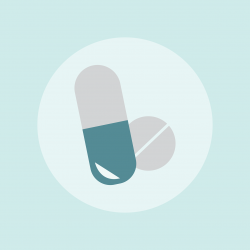Types of narcotics can range from prescription medications to street drugs such as cocaine. When narcotics are abused, the side effects can be very serious.
Types of Narcotics
Narcotics classify a wide list of potentially abusive drugs that can lead to addiction but most commonly, the types of narcotics that are most commonly abused include:
- Naturally occurring narcotics such as heroin, morphine and opium
- Synthetic narcotics such as Percodan, Demerol and Darvon
- Semi-synthetic narcotics such as Oxycodone and Hydrocodone
Most of the time, narcotics are the term used to describe the analgesic effects that are caused by opiates. A narcotic is either naturally occurring or semi-naturally occurring and can include things other than opioids although opiates and opioids are the most widely controlled substances within the list.
The Drug Enforcement Agency (DEA) also calls narcotics controlled substances. There are a number of different controlled substances that the DEA monitors the prescription of, consumption of and possession of in an effort to curb and control the abusive nature of these drugs. Generally, the DEA considered narcotics to be one of a wide range of prescription medications that typically are prescribed for the reduction of pain and which are either opiates or opioids.
DEA Narcotics Include:
- Demerol
- Darvocet
- Codeine
- Darvon
- Dilaudid
- Hydromorphone
- Lorcet
- Lortab
- Oramorph
- Percocet
- PhenaphenTalawin
- Tussionex
- Tylenol w/ Codeine
- Vicodin
Possession of any of these narcotics without a proper prescription or the sale of these drugs can lead to extreme legal consequences including arrest as well as jail or prison time. In some states, the possession of controlled substances such as these can lead to very length prison terms in excess of 30 years or more even on a first offense!
In some cases, narcotics include more than just opiate or prescription pain medications.
Some additional narcotics include:
Cannabis
Marijuana, hashish and other schedule 1 drugs are part of the marijuana plant and are also considered narcotics. Though these narcotics generally carry a lighter sentence in jail if an individual is caught with them and they do not generally have as wide of a potential for abuse or for causing extremely dangerous addiction, the regulation of such narcotics is still heavily reported through much of the United States. The active ingredient in these drugs, THC, reduces the perception of pain and other aspects of an individual’s life.
LSD & Hallucinogenic Drugs
Many psychedelic drugs are also included on the list of narcotics that are controlled by drug enforcement agencies and which have a wide potential for abuse. Some of the most common hallucinogenic drugs include LSD and PCP. These drugs are less widely used than they were back in the 1990s but they are still around and still causing reason for concern. Hallucinogenic drugs cause a psychedelic state that is almost like a dream and can lead to extreme alterations of a user’s mood which may result in that user becoming a danger to themselves or to others.
Opioids
Opiates and opioids are the most widely abused narcotics and the most widely regulated. These include a very vast range of prescription medications that are prescribed following surgery or for the treatment of chronic pain. Because these narcotics have a wide potential for abuse and are typically highly addictive, they are the leading cause of hospital admittances for things such as accident while under the influence or overdose related complications.
Pain Medications
Most people who think of narcotics think of pain medications. Narcotics may be prescribed for the treatment of pain following a minor injury or surgical procedure or they could be prescribed for the treatment of persistent cough or diarrhea. Most of the time, the pain medications that are prescribed in a hospital setting are opiates or opioids and they all have a relatively dangerous potential for causing physical dependence.
Narcotics Schedules
The DEA classifies controlled substances or narcotics into various schedules. Narcotics are classified into 5 distinct schedules or categories that pertain to the medical use of the drug, the risk of dependence and the level of or potential level of abuse. The most dangerous narcotics are Schedule 1 substances while the least dangerous or those with the most minimal chance of abuse are those in Schedule 5. All narcotics fall somewhere within this schedule of substances as outlined by the DEA.
The DEA Schedules are as follows:
- Schedule 1 Narcotics – no accepted medical use and are completely illegal to possess. These include marijuana and heroin
- Schedule 2 Narcotics – have a high potential for abuse but may have medical uses. These include cocaine, methadone and fentanyl
- Schedule 3 Narcotics – have a high potential for abuse, not as high as Schedule 1 or 2 substances but still dangerously high. These include vicodin & some steroids
- Schedule 4 Narcotics – have a relatively low potential for abuse and contain very limited quantities of narcotics. These include Darvocet, valium and Xanax
- Schedule 5 Narcotics – a low potential for abuse and very limited narcotic quantities. These include Robitussin AC, and medications with less than 200mg of codeine
These schedules are used to describe the many different levels of abusive nature that narcotics have and the DEA as well as other law enforcement agencies use this scheduling of drugs to set rules for sentencing and similar consequences when an individual is caught with the drugs without a prescription.
If you or someone you know abuses narcotics, call 800-934-1582(Who Answers?) for help finding a treatment program.
the Take-Away


